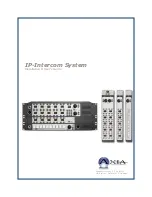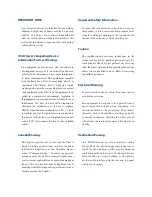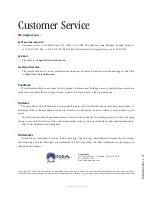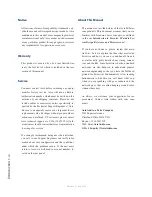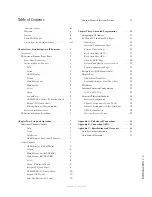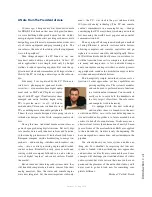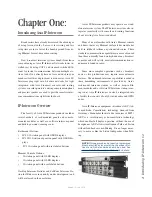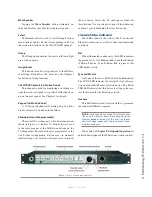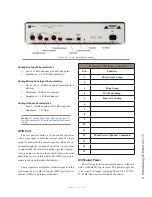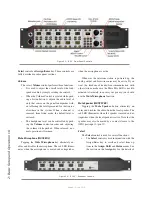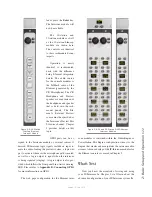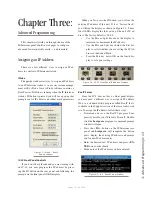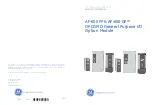
In
tr
od
uc
tio
n • v
ii
Version 1.2.1 Aug 2010
A Note From The President of Axia
20 years ago, I designed my first broadcast console
for PR&E. I look back on that time with great fondness;
we were building bullet-proof boards for the world’s
most prestigious broadcasters, making each new console
design bigger and fancier to accommodate a wider vari-
ety of source equipment and programming styles. The
console was the core of the studio; all other equipment
was on the periphery.
Then things changed: the PC found its way into
broadcast audio delivery and production. At first, PC
audio applications were simple, used only by budget
stations to reduce operating expenses. But soon the ap-
plications evolved and were embraced by larger stations.
Slowly, the PC was taking center stage in the radio stu-
dio.
Like many, I was captivated by the PC. Stations re-
tired carts, phonographs, open-reel decks,
cassettes — even more modern digital equip-
ment such as DAT and CD players, replac-
ing all with PC apps. Client/server systems
emerged and entire facilities began using
PCs to provide most – or all – of their re-
corded audio. Yet consoles continued to treat
PCs as nothing more than audio peripherals.
I knew that we console designers were going to have to
rethink our designs to deal with computer-centric stu-
dios.
During this time, traditional broadcast console com-
panies began producing digital versions. But early digi-
tal consoles were nearly identical in form and function
to their analog predecessors. It took a fresh look from a
European company outside broadcasting to merge two
products – audio routing switchers and broadcast con-
soles – into a central processing engine and attached
control surface. Eventually nearly every console and
routing switcher company followed suit, and a wide va-
riety of digital “engines” and control surfaces flooded
the market.
But, advanced as these integrated systems were, they
still handled computer-based audio sources like their
analog ancestors. Sure, the router and console engine
were now integrated, but the most important studio ele-
ment – the PC – was stuck in the past, interfaced with
100-year-old analog technology. The PC and console
couldn’t communicate in a meaningful way – strange,
considering that PCs everywhere were being networked,
fast becoming the world’s most popular and powerful
communication tool.
Then a group of Telos engineers developed a method
of using Ethernet to network real-time audio devices,
allowing computers and consoles, controllers and pe-
ripherals to interact smoothly and intelligently. Power-
ful, flexible networks had finally come to our studios. As
with the transition from carts to computers, the benefits
are many and impressive. A few networked compo-
nents can replace routing switchers, consoles, process-
ing peripherals, sound cards, distribution amps, selector
switches and myriad related devices.
This deceptively simple networked system costs a
fraction of other approaches, yet has capabilities sur-
passing anything else. The system is modular
and can be used to perform discrete functions
in a traditional environment. Concurrently, it
easily scales to serve both the humblest and
the very largest of facilities. Console, router,
and computer work in harmony.
So, equipped with this new technology
and countless ideas, we launch
Axia
, the new-
est division of Telos.
Axia
is all about delivering innova-
tive networked audio products to future-minded broad-
casters. On behalf of our entire team, I welcome you as a
charter client. Axia is the culmination of nearly 40 man-
years of some of the most ambitious R&D ever applied
to the radio industry. And this is only the beginning. We
have more products, innovations, and partnerships in the
pipeline.
You already know your Axia system is unlike any-
thing else. So it shouldn’t be surprising that your new
system is loaded with new thinking, new approaches,
and new ideas in virtually every conceivable area. Some
concepts will challenge your traditional ideas of studio
audio systems, but we’re certain that once you have ex-
perienced the pleasures of the networked studio, you’ll
never want to go back. And now, for something com-
pletely different...
Michael “Catfish” Dosch

